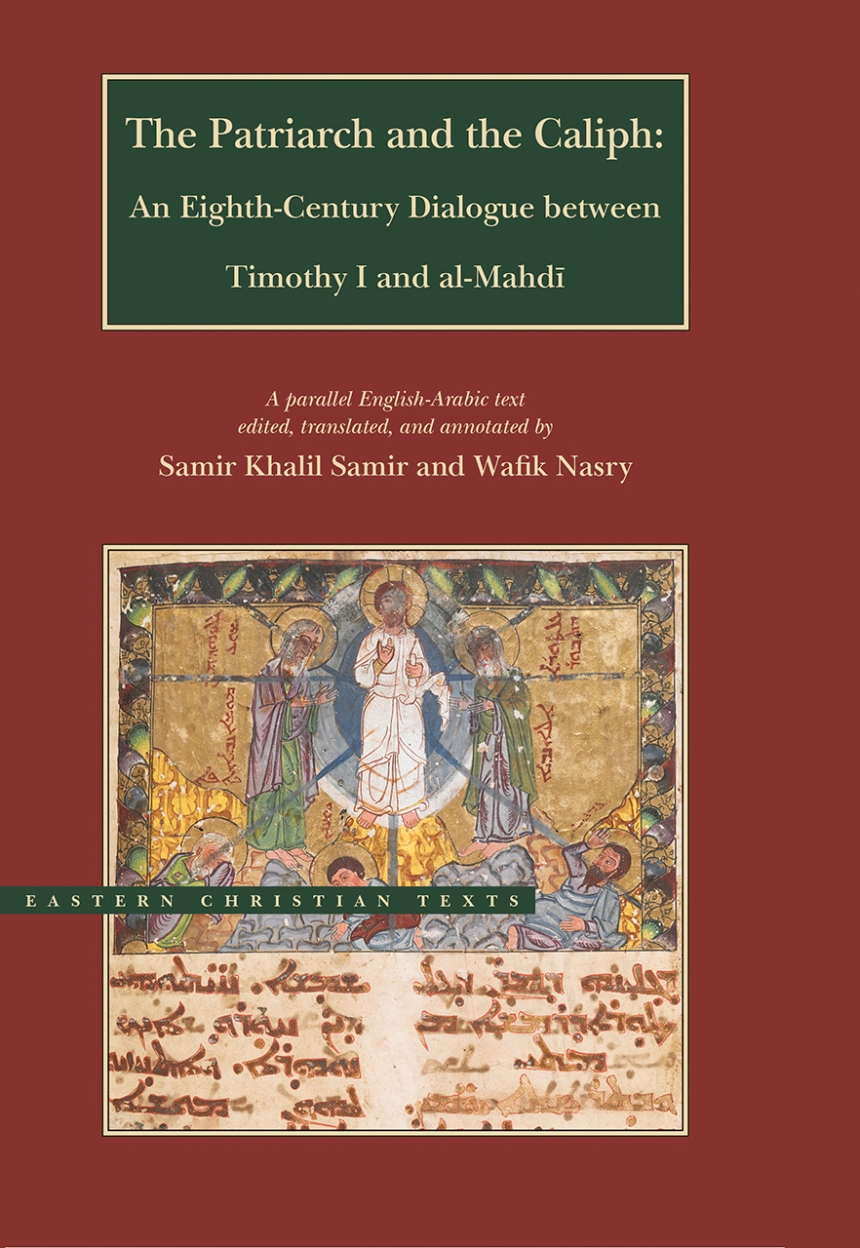The Patriarch and the Caliph
An Eighth-Century Dialogue between Timothy I and al-Mahdi
9780842529891
Distributed for Brigham Young University
The Patriarch and the Caliph
An Eighth-Century Dialogue between Timothy I and al-Mahdi
The Patriarch and the Caliph presents the famous “dialogue without resolution” between the third Abbasid Caliph, al-Mahdi, and the first Nestorian Patriarch, Timothy I, in Baghdad in 781 CE. The abundance of versions of this intellectually rich debate between adherents of Islam and of Christianity is a testimony to its historic importance. Of particular note is the mutual respect shown between the interlocutors in a period when Islam was the dominant political and intellectual influence in the Middle Eastern and Mediterranean worlds.
This volume collates an abridged sixteenth-century Arabic version based on Timothy I’s Syriac original. Parallel English translations accompany the Arabic. Including annotations, indexes, glossaries, and bibliographies to further assist the reader, The Patriarch and the Caliph reveals important insights into the complex relationship between two historical figures, and through them, two major world religions.
This volume collates an abridged sixteenth-century Arabic version based on Timothy I’s Syriac original. Parallel English translations accompany the Arabic. Including annotations, indexes, glossaries, and bibliographies to further assist the reader, The Patriarch and the Caliph reveals important insights into the complex relationship between two historical figures, and through them, two major world religions.
Table of Contents
Preface: Dialogues without Resolution
Note on Conventions
System of Transliteration
Introduction
Summary of Questions and Answers
The First Question: The Spiritual Sonship of Christ
The Second Question: The Two Births of Christ
The Third Question: The Messiah is One Person of Two Natures
The Fourth Question: God Is Christ’s Father and God- Commentary on John 20:17
The Fifth Question: The How of the Spiritual Birth
The Sixth Question: The Blessed Trinity Is One God
The Seventh Question: The Word and the Spirit Are Eternal
The Eighth Question: The Three Persons United and Distinct
The Ninth Question: Circumcision and Baptism
The Tenth Question: Christ Abolished the Way of Moses While Not Opposing It
The Eleventh Question: The Reason for Worship toward the East
The Twelfth Question: The Messiah Prayed in His Humanity, Not in His Divinity
The Thirteenth Question: The Prophets and the Gospel Witness to Christ
The Fourteenth Question: The Paraclete Is Not Muhammad in the Gospel
The Fifteenth Question: There Is No Witness to Muhammad in the Gospel
The Sixteenth Question: The Qur’an Is Not from God, for It Was Not Proclaimed True with Miracles
The Seventeenth Question: “The Rider on a Camel” Is Not Muhammad
The Eighteenth Question: Reverence for the Cross Because It IS the Instrument of Our Redemption and the Sign of Christ’s Love for Us
The Nineteenth Question: The Veracity of Christ’s Crucifixion in Response to “They Killed Him Not, nor Crucified Him”
The Twentieth Question: Responding to “It Was Made to Appear to Them”
The Twenty-First Question: Blaming the Jews for Crucifying the Messiah
The Twenty-Second Question: The Jews Did Not Wish, by Crucifying the Messiah, to Fulfill His Will
The Twenty-Third Question: The Meaning of Revelation of the Gospel; Lack of Contradiction in the Gospels
The Twenty-Fourth Question: The Impossibility of Leaving the Gospel for Another due to the Perfection of the Gospel
The Twenty-Fifth Question: “A Prophet like Me from Your Own Kinsmen” Does Not Correspond to Muhammad
The Twenty-Sixth Question: Christ Did Not Kill His Mother but Transported Her to a Better Life
The Twenty-Seventh Question: “No One is Good but God Alone” Does Not Deny the Goodness of Christ
The Conclusion of the Dialogue
Note on Conventions
System of Transliteration
Introduction
Summary of Questions and Answers
The First Question: The Spiritual Sonship of Christ
The Second Question: The Two Births of Christ
The Third Question: The Messiah is One Person of Two Natures
The Fourth Question: God Is Christ’s Father and God- Commentary on John 20:17
The Fifth Question: The How of the Spiritual Birth
The Sixth Question: The Blessed Trinity Is One God
The Seventh Question: The Word and the Spirit Are Eternal
The Eighth Question: The Three Persons United and Distinct
The Ninth Question: Circumcision and Baptism
The Tenth Question: Christ Abolished the Way of Moses While Not Opposing It
The Eleventh Question: The Reason for Worship toward the East
The Twelfth Question: The Messiah Prayed in His Humanity, Not in His Divinity
The Thirteenth Question: The Prophets and the Gospel Witness to Christ
The Fourteenth Question: The Paraclete Is Not Muhammad in the Gospel
The Fifteenth Question: There Is No Witness to Muhammad in the Gospel
The Sixteenth Question: The Qur’an Is Not from God, for It Was Not Proclaimed True with Miracles
The Seventeenth Question: “The Rider on a Camel” Is Not Muhammad
The Eighteenth Question: Reverence for the Cross Because It IS the Instrument of Our Redemption and the Sign of Christ’s Love for Us
The Nineteenth Question: The Veracity of Christ’s Crucifixion in Response to “They Killed Him Not, nor Crucified Him”
The Twentieth Question: Responding to “It Was Made to Appear to Them”
The Twenty-First Question: Blaming the Jews for Crucifying the Messiah
The Twenty-Second Question: The Jews Did Not Wish, by Crucifying the Messiah, to Fulfill His Will
The Twenty-Third Question: The Meaning of Revelation of the Gospel; Lack of Contradiction in the Gospels
The Twenty-Fourth Question: The Impossibility of Leaving the Gospel for Another due to the Perfection of the Gospel
The Twenty-Fifth Question: “A Prophet like Me from Your Own Kinsmen” Does Not Correspond to Muhammad
The Twenty-Sixth Question: Christ Did Not Kill His Mother but Transported Her to a Better Life
The Twenty-Seventh Question: “No One is Good but God Alone” Does Not Deny the Goodness of Christ
The Conclusion of the Dialogue

